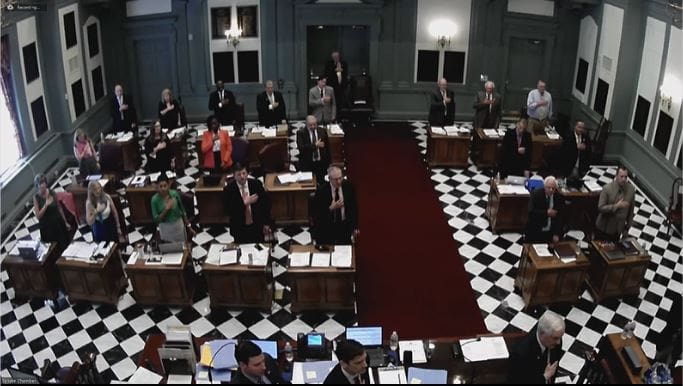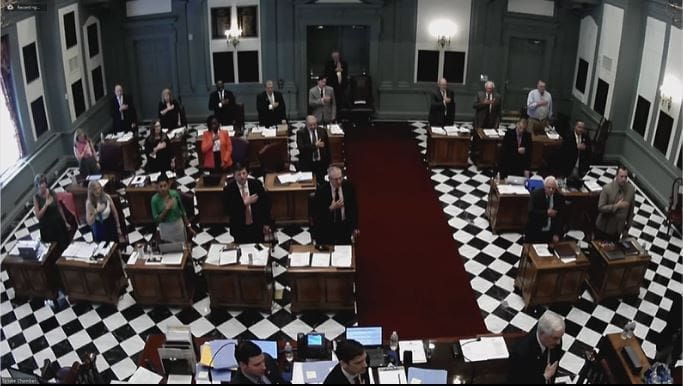
A day after being released by the Senate Education Committee, a bill that refocus the way reading is taught sailed through the Senate.
A bill that requires the state to establish a curriculum aligned with the science of reading is on its way to the state House after being unanimously supported by all 21 senators.
Senate Bill 4, which passed out of the Senate Education Committee Wednesday, will now move to the House Education Committee.
Not only did all 21 senators vote to pass the bill, they all sponsored or co-sponsor the bill.
During Thursday’s session, Sen. Colin Bonini, R-Dover, shared a letter written by his wife, Melissa Harrington.
She is a neuroscientist with a PhD in neurobiology from Stanford University – and she fully supports the legislation.
Her letter said research shows our brains are hardwired for spoken language, but reading language is a relatively new phenomena in mankind’s existence.
“The most effective way to teach children is to help their brain connect letters with the way they sound – phonics,” Bonini read, “which then connects the words to brain systems for the coding of speech sounds, which the brain puts together to determine what the word means.”
If passed, SB 4 would require the Department of Education to curate and maintain a list of recommended resources and materials related to the science of reading.
By the 2027-28 school year, districts and charters would be required to create a curriculum from that list and make sure all reading teachers are trained to teach it.
Schools will be required to submit an annual report to the Department of Education about the implementation of their new curriculum. The department will be responsible for publishing a summary of these reports.
Sponsor Sen. Laura Sturgeon, D-Hockessin, said on the Senate floor Thursday that professional development is a crucial part to the implementation. The materials don’t mean much if teachers don’t know how to effectively use them, she said.
The bill calls for around 10-20 hours of professional development to train reading teachers, depending on their familiarity with the material.
Someone with some background in the science might need less training, while another unfamiliar with the science is going to need about 20 hours of training, said Sturgeon, a former teacher.
This is about three full days or six half days of training.
Local districts will be asked to provide substitutes for teachers to fulfill their training requirements.
There are at least six days built into the school calendar for professional development days.
“This could replace the regular curriculum training that’s given at the beginning of every school year and over the summer,” said Sturgeon.
The bill doesn’t specify who will train the teachers. Sturgeon says that was intentional.
Teachers trained in the science already could potentially coach others, she said. School administrators designated to oversee the program also should be trained and so qualified to coach others, she said.
Districts could also can hire outside agencies to train them.
The science of reading takes into account six components of learning: phonemic awareness, phonics, reading fluency, vocabulary, text comprehension and oral language.
The letter from Bonini’s wife cited a neurological research study that asked a group of participants to learn new words in a made-up language.
In the study, some readers were first taught which symbols correspond with which sounds, while the other group of readers were asked to memorize whole worlds.
The first group was much more successful in learning the phony language.
“Readers who were taught to connect letters to sounds, a.k.a. learning phonics,” Bonini said, “and then sounds to meaning were able to read aloud more quickly and correctly, had better recall for the correct meanings of words and could transfer their knowledge to new words.”

Raised in Doylestown, Pennsylvania, Jarek earned a B.A. in journalism and a B.A. in political science from Temple University in 2021. After running CNN’s Michael Smerconish’s YouTube channel, Jarek became a reporter for the Bucks County Herald before joining Delaware LIVE News.
Jarek can be reached by email at [email protected] or by phone at (215) 450-9982. Follow him on Twitter @jarekrutz
Share this Post




